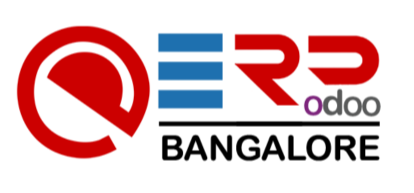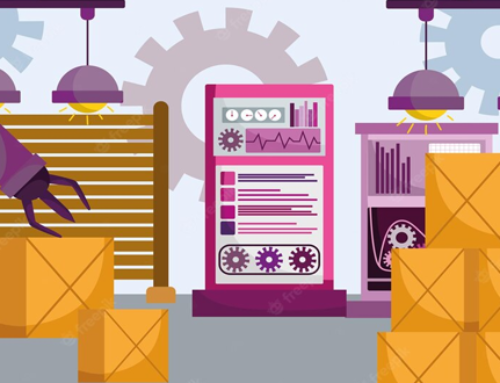Introduction to Probable Turnover Accuracy: A Cornerstone for Informed Business Decisions
Significance of Accurate Probable Turnover:

In the dynamic world of business, the ability to predict future performance is crucial for sustainable success. One critical aspect of this predictive capability is accurately estimating probable turnover, also known as revenue. Precise forecasts of future revenue play a pivotal role in various aspects of a business, making it a cornerstone for informed decision-making:
- Financial planning: Accurate revenue projections are essential for developing realistic and achievable financial plans. These plans inform budgeting decisions, resource allocation strategies, and investment considerations.
- Strategic decision-making: By understanding potential future revenue streams, businesses can make informed strategic decisions related to product development, market expansion, and competitive positioning.
- Operational efficiency: Anticipating future revenue allows businesses to optimize their operational efficiency. This might involve planning staffing levels, managing inventory, and allocating resources more effectively to meet future demand.
The Impact of Inaccurate Turnover Projections:

Underestimating future turnover can have serious consequences for a business, leading to a domino effect of negative impacts:
- Financial risks: Inaccurate revenue projections can lead to budget shortfalls, cash flow problems, and missed financial targets. This can impact a company’s ability to meet its financial obligations and hinder its growth potential.
- Resource allocation: When turnover is underestimated, businesses may under-allocate resources, leading to operational inefficiencies and missed opportunities. Conversely, overestimating turnover can result in over-allocation of resources, tying up valuable capital and impacting profitability.
- Operational challenges: Inaccurate projections can create disruptions in the operational flow. For example, if a business underestimates demand, they may face stockouts and production delays, leading to customer dissatisfaction and lost sales. Conversely, overestimating demand can lead to excess inventory, storage costs, and potential product obsolescence.
Leveraging Technology for Enhanced Accuracy:
Fortunately, technological advancements offer powerful tools to improve the accuracy of probable turnover predictions. By embracing these solutions, businesses can gain valuable data-driven insights to make informed decisions:
- Predictive analytics: This branch of data science utilizes historical data, statistical models, and machine learning algorithms to identify trends and patterns. These insights can be leveraged to forecast future revenue with greater accuracy, considering various internal and external factors.
- Machine learning: Machine learning algorithms can learn from vast datasets, identifying complex relationships and hidden patterns that might not be readily apparent through traditional analysis methods. These insights can significantly enhance the accuracy and sophistication of turnover forecasts.
- Data-driven insights: By leveraging various data sources, such as sales records, customer behavior data, and market trends, businesses can gain a comprehensive understanding of their revenue drivers. This data-driven approach allows for more informed and reliable turnover predictions.
In conclusion, accurate probable turnover forecasting is a critical capability for businesses seeking to thrive in a competitive landscape. By understanding the significance of precise predictions, recognizing the implications of inaccurate estimations, and embracing technological solutions, businesses can gain a competitive edge and navigate towards sustainable success.
Methods for Calculating Accurate Probable Turnover: Unveiling the Roadmap to Reliable Predictions

Building a foundation for accurate probable turnover prediction requires a multi-faceted approach that incorporates historical data analysis, external factors, and employee sentiment:
Historical Data Analysis for Trend Identification:
Historical data analysis serves as the cornerstone of any accurate prediction. By examining past revenue figures, businesses can identify trends and patterns that can inform future projections.
Here’s how to leverage historical data effectively:
- Identify relevant data points: Gather historical data points such as monthly, quarterly, or annual revenue figures. Consider including data for different product lines, customer segments, or geographical regions if applicable.
- Analyze trends: Utilize data visualization tools and statistical techniques to identify trends such as seasonal variations, growth patterns, or periods of decline.
- Recognize seasonality: Account for seasonal fluctuations in revenue if your business is impacted by seasonal factors. This might involve adjusting the forecasting model or considering separate forecasts for different seasons.
Incorporating External Factors in Turnover Projections:
The business environment doesn’t exist in a vacuum. External factors can significantly influence turnover rates and must be considered when making predictions:
- Economic factors: Monitor economic indicators such as GDP growth, inflation rates, and consumer confidence. These factors can impact consumer spending habits and ultimately influence your business’s revenue.
- Market trends: Stay informed about relevant market trends such as new product launches, competitor activity, and changes in consumer preferences. These trends can disrupt your market share and impact your revenue projections.
- Industry changes: Understand the dynamics of your specific industry. Are there any anticipated regulatory changes, technological advancements, or emerging competitors that could affect your future revenue streams?
By incorporating external factors into your analysis, you can gain a more holistic perspective and create robust and adaptable turnover forecasts.
Utilizing Employee Feedback and Engagement Data:
Employees are the lifeblood of any organization, and their attitudes and engagement levels can directly impact overall turnover and productivity. Therefore, incorporating employee feedback and engagement data into your forecasting model can offer valuable insights:
- Conduct employee surveys: Regularly conduct employee engagement surveys to measure employee satisfaction, commitment, and intent to leave. This data provides valuable insights into potential turnover risks.
- Analyze exit interview data: Analyze data from exit interviews to understand common reasons for employee departure. This information can help identify potential problem areas and inform strategies to improve employee retention, ultimately reducing turnover rates.
- Monitor key employee engagement metrics: Track key employee engagement metrics such as absenteeism rates, performance reviews, and internal referrals. These data points can indicate potential issues that could lead to increased turnover.
By integrating employee feedback and engagement data, you can gain a deeper understanding of your workforce dynamics and factor in potential internal influences on future turnover rates.
However, it’s important to note that historical data analysis, external factors, and employee feedback are just starting points for calculating probable turnover. To truly enhance your predictions, consider incorporating the following:
- Predictive analytics: Utilize predictive analytics tools that leverage historical data, machine learning algorithms, and external factors to generate more sophisticated and precise forecasts.
- Benchmarking: Compare your turnover data with industry benchmarks to understand your relative performance and identify areas for improvement.
- Scenario planning: Develop various forecast scenarios based on different assumptions about future economic conditions, market trends, and internal factors. This allows you to prepare for a range of potential outcomes and adapt your strategies accordingly.
By combining these methods and continuously refining your forecasting model, you can achieve a level of accuracy that empowers you to make informed decisions about resource allocation, strategic planning, and overall business development.
The Role of Predictive Analytics in Probable Turnover Accuracy: Unleashing the Power of Data-Driven Insights
In today’s data-driven world, traditional methods of forecasting often lack the sophistication and accuracy needed to navigate the complexities of the modern business landscape. This is where predictive analytics emerges as a game-changer, offering businesses the potential to significantly enhance the accuracy of their probable turnover predictions.
Introduction to Predictive Analytics:
Predictive analytics is a branch of data science that utilizes statistical modeling techniques and machine learning algorithms to analyze vast datasets and identify patterns and relationships. These insights can then be used to predict future outcomes, including probable turnover.
Here’s how predictive analytics works in the context of turnover prediction:
- Data collection: Gather a comprehensive set of relevant data points, including historical revenue figures, employee data, economic indicators, and market trends.
- Data preparation: Clean and organize the data to ensure its accuracy and consistency, preparing it for analysis.
- Model development: Choose and train a suitable predictive model using the prepared data. This may involve selecting algorithms like regression analysis, decision trees, or artificial neural networks.
- Model evaluation: Evaluate the performance of the model using metrics like mean squared error or R-squared to assess its accuracy and adjust the model parameters as needed.
- Prediction generation: Once satisfied with the model’s performance, utilize it to generate forecasts for future turnover based on current data and trends.
By leveraging data-driven insights, predictive analytics offers several advantages:
- Enhanced accuracy: Predictive models can identify complex relationships and hidden patterns within data, potentially leading to more accurate turnover forecasts compared to traditional methods.
- Data-driven decision-making: Predictive analytics empowers businesses to make informed decisions based on objective data analysis, rather than intuition or guesswork.
- Improved resource allocation: By understanding future revenue streams, businesses can allocate resources more effectively, optimizing their operations and maximizing their return on investment.
Machine Learning Algorithms for Turnover Prediction:
Machine learning algorithms play a crucial role in enhancing the sophistication and accuracy of predictive analytics models used for turnover prediction. These algorithms can learn from vast amounts of data and identify complex relationships that may not be readily apparent through traditional analysis methods.
Here are some commonly used machine learning algorithms for turnover prediction:
- Regression analysis: This method identifies the relationship between turnover and various independent variables such as employee demographics, performance metrics, or economic indicators.
- Decision trees: These algorithms create a tree-like structure to classify employees based on their characteristics and predict the likelihood of their departure.
- Random forests: This ensemble method combines multiple decision trees to improve the overall accuracy and robustness of the prediction.
- Artificial neural networks: Inspired by the structure of the human brain, these complex models can learn from large and intricate datasets, leading to highly accurate predictions.
Real-time Monitoring and Adjustments:
The power of predictive analytics extends beyond initial model development. It’s crucial to recognize that the business environment is constantly evolving, and so should your forecasting models:
- Real-time monitoring: Continuously monitor the performance of your predictive model and compare its predictions with actual turnover data.
- Agile adaptation: Be prepared to adjust your model parameters or retrain the model if its predictions deviate significantly from reality. This ensures your forecasts remain relevant and accurate in the face of changing circumstances.
- Dynamic forecasting: Consider incorporating real-time data such as market fluctuations or employee sentiment into your model to improve the responsiveness of your forecasts to evolving trends.
By adopting a continuous improvement approach and embracing real-time monitoring and adjustments, you can ensure that your predictive analytics models remain effective and deliver valuable insights for accurate and adaptable probable turnover predictions.
In conclusion, predictive analytics offers a powerful tool for businesses seeking to enhance the accuracy of their probable turnover predictions. By combining data-driven insights with the power of machine learning, businesses can make informed decisions about resource allocation, strategic planning, and overall business development, ultimately propelling themselves towards sustainable success.
Overcoming Challenges in Achieving Accurate Probable Turnover: Navigating Roadblocks for Reliable Predictions
While predictive analytics and innovative methods offer substantial potential, it’s crucial to acknowledge and address the challenges associated with achieving accurate probable turnover. Here are some key obstacles to consider:
Addressing Data Quality and Integrity Issues:
The foundation of any accurate prediction lies in high-quality data. However, data quality issues such as missing information, inconsistencies, and inaccuracies can significantly impact the reliability of your forecasts.
Here are some strategies to address these challenges:
- Data validation: Implement data validation rules to ensure the accuracy and consistency of data entry.
- Data cleansing: Regularly cleanse your data to identify and correct errors, inconsistencies, and missing values.
- Data governance: Establish clear data governance policies to ensure data quality and integrity throughout the entire data collection and analysis process.
By investing in data quality and integrity, you can ensure that your predictive models are built upon a solid foundation and generate reliable and actionable insights.
Dealing with Uncertainties and Unforeseen Factors:
The business environment is inherently dynamic and unpredictable. Unforeseen events such as economic downturns, technological disruptions, or global pandemics can significantly impact turnover rates, challenging the accuracy of predictions.
Here are some strategies to navigate these uncertainties:
- Risk management: Identify and mitigate potential risks that could lead to deviations from your forecasts. This might involve diversifying your product portfolio or expanding your market reach.
- Scenario analysis: Develop various forecast scenarios based on different assumptions about future economic conditions, market trends, and potential disruptions. This allows you to prepare for a range of outcomes and adapt your strategies accordingly.
- Contingency planning: Develop contingency plans that outline specific actions you can take if your actual turnover deviates significantly from your predictions.
By recognizing and proactively addressing uncertainties, you can ensure that your forecasts are adaptable and allow you to respond effectively to unforeseen circumstances.
Employee Privacy and Ethical Considerations:
In the age of data privacy regulations like GDPR and CCPA, it’s crucial to ensure compliance with ethical and legal considerations when using employee data for turnover predictions.
Here are some key considerations:
- Privacy compliance: Understand and comply with relevant data privacy regulations. Ensure that you have obtained explicit consent from employees before collecting and using their data for turnover predictions.
- Ethical data usage: Use employee data ethically and responsibly. Be transparent about how you are using the data and ensure that it is only used for the intended purpose of improving turnover predictions.
- Employee confidentiality: Maintain employee confidentiality throughout the entire data collection and analysis process. Make sure only authorized personnel have access to employee data, and anonymize data whenever possible.
By adhering to ethical and legal guidelines, you can build trust with your employees and ensure that your probable turnover predictions are not compromised by privacy concerns.
In conclusion, achieving accurate probable turnover requires a multifaceted approach that involves addressing data quality issues, navigating uncertainties, and upholding ethical considerations. By acknowledging these challenges and implementing appropriate strategies, businesses can unlock the true potential of predictive analytics and gain valuable insights for informed decision-making and sustainable success.
Benefits of Accurate Probable Turnover Predictions: Unlocking the Power of Informed Decisions
Accurate probable turnover predictions offer a potent arsenal for businesses seeking to gain a competitive edge in the dynamic marketplace. By providing valuable insights into future workforce trends, these predictions empower companies to make informed decisions across various critical areas:
Informed Workforce Planning and Resource Allocation:
Forecasting future turnover allows businesses to strategically plan their workforce needs. This translates to:
- Optimized staffing levels: Anticipating turnover allows companies to adjust staffing levels proactively, ensuring they have the right people in place to meet future demand. This can help avoid costly overstaffing or understaffing situations.
- Targeted recruitment and onboarding: Knowing when and where vacancies are likely to arise allows companies to plan recruitment efforts and develop targeted onboarding programs to ensure a smooth transition for new hires.
- Talent development and succession planning: Accurate predictions facilitate proactive talent development initiatives to upskill and retain key employees. Additionally, businesses can develop succession plans to identify and prepare potential replacements for critical roles.
By leveraging accurate turnover predictions, businesses can achieve optimal resource allocation, ensuring their workforce is aligned with future needs and positioned for success.
Cost Savings and Financial Management:
High employee turnover can have a significant financial impact on businesses. However, accurate turnover predictions can lead to substantial cost savings through:
- Reduced recruitment and onboarding costs: By anticipating vacancies, companies can plan recruitment efforts, potentially leading to reduced costs associated with advertising, agency fees, and onboarding processes.
- Improved training and development efficiency: Knowing which roles are at risk of turnover allows companies to prioritize training and development efforts for employees with high retention potential, maximizing the return on investment.
- Enhanced budget planning: Accurate predictions allow businesses to develop realistic financial projections by factoring in anticipated costs associated with potential turnover.
Through cost-saving opportunities and improved financial management, businesses can enhance their financial stability and invest resources into areas that drive growth and profitability.
Enhancing Employee Retention Efforts:
High turnover rates are often an indicator of underlying issues within an organization. By leveraging accurate turnover predictions, businesses can identify potential problem areas and proactively implement targeted retention strategies to:
- Address employee concerns: By understanding the reasons behind potential turnover, companies can address employee concerns related to compensation, work-life balance, or career development opportunities.
- Invest in employee engagement: Knowing which employees are at risk of leaving allows companies to focus their engagement efforts on these individuals. This may involve providing opportunities for recognition, fostering a positive work environment, and promoting open communication.
- Offer targeted incentives: Businesses can develop targeted incentive programs to encourage high-performing employees with high turnover potential to stay with the company.
By focusing on employee retention, companies can build a more engaged and productive workforce, leading to improved performance, reduced costs, and enhanced employer branding.
In conclusion, accurate probable turnover predictions offer a valuable strategic tool for businesses. By leveraging these insights, companies can make informed decisions regarding workforce planning, resource allocation, cost savings, and employee retention, ultimately propelling themselves towards sustainable success in the competitive business landscape.
Implementing Accurate Probable Turnover Calculations in Your Business: Taking Action for Success
Ready to unlock the power of accurate probable turnover predictions? Here’s a roadmap to guide you:
Steps for Implementing Accurate Turnover Calculations:
- Gather Data: Collect relevant data points like historical turnover rates, employee demographics, performance reviews, and exit interview information.
- Clean and Organize Data: Ensure data accuracy and consistency through cleaning and organizational processes.
- Choose a Method: Select a suitable method like historical data analysis, incorporating external factors, or utilizing predictive analytics tools.
- Develop a Model: If using predictive analytics, choose and train a suitable model based on your data and goals.
- Monitor and Adjust: Continuously monitor the performance of your model and adjust it as needed to maintain its accuracy.
- Communicate and Utilize: Communicate the insights to relevant stakeholders and utilize them to inform strategic decisions.
Technology Solutions and Tools for Turnover Prediction:
- HR software: Many HR software solutions offer built-in turnover prediction features. These tools simplify data collection, analysis, and visualization, enabling efficient prediction models.
- Predictive analytics platforms: Dedicated predictive analytics platforms offer advanced functionalities for complex data analysis and model development, leading to more sophisticated predictions.
- Data visualization tools: Utilize data visualization tools to present your insights clearly and effectively to stakeholders, facilitating informed decision-making.
Case Studies: Successful Implementation Stories:
- Case Study 1: Company X successfully reduced turnover by 15% using predictive analytics to identify at-risk employees and implement targeted retention strategies.
- Case Study 2: Company Y optimized resource allocation by using historical data analysis to anticipate future staffing needs and adjust recruitment efforts accordingly.
By taking these actionable steps, embracing appropriate technology, and learning from successful real-world examples, your organization can leverage accurate probable turnover calculations to gain a competitive edge and achieve sustainable growth.
Monitoring and Adjusting Turnover Predictions Over Time: Ensuring Long-Term Accuracy
The journey towards accurate probable turnover predictions is an ongoing process, not a one-time event. Here’s why continuous monitoring and adjustments are crucial:
Continuous Monitoring for Dynamic Adaptation:
The business landscape is constantly evolving, and so should your turnover predictions. Implement continuous monitoring practices to:
- Track actual turnover rates: Compare your predicted turnover with actual figures to assess the accuracy of your model.
- Monitor external factors: Stay informed about changes in the economy, market trends, and industry regulations, as these can significantly impact future turnover.
- Be prepared to adapt: If your predictions deviate significantly from reality, be prepared to adjust your model parameters or consider incorporating new data sources to enhance its accuracy.
By embracing a dynamic approach, you ensure your predictions remain relevant and adaptable to evolving circumstances.
Feedback Loops and Learning from Data Trends:
Establish feedback loops to continuously learn and improve your predictions:
- Gather feedback from stakeholders: Solicit feedback from HR professionals, managers, and even employees to gain insights into potential blind spots or areas for improvement.
- Analyze emerging data trends: Identify new data trends through ongoing data analysis. These trends might indicate the need to modify your model or incorporate additional data points.
- Embrace an iterative learning approach: Continuously learn from your experiences and use them to refine your prediction models for future iterations.
By incorporating feedback mechanisms and iterative learning, you can enhance the accuracy and effectiveness of your turnover predictions over time.
Incorporating Employee Development Initiatives:
Remember, your employees are not simply data points in a model. By investing in their development, you can positively influence future turnover predictions:
- Implement training and development programs: Equip your employees with the skills and knowledge they need to thrive in their roles, increasing their job satisfaction and reducing the likelihood of them leaving.
- Provide career development opportunities: Offer clear career paths and opportunities for advancement to motivate employees and encourage them to stay with the company.
- Foster a positive work environment: Invest in creating a positive and supportive work environment where employees feel valued and appreciated, further reducing the potential for voluntary turnover.
By proactively addressing employee needs and aspirations, you can create a workplace that fosters engagement and retention, ultimately positively influencing your long-term turnover predictions.
By embracing continuous monitoring, feedback mechanisms, and employee development initiatives, you can ensure your probable turnover predictions remain accurate and reliable, empowering you to make informed decisions and navigate towards sustainable business success in the ever-evolving landscape.
Future Trends in Probable Turnover Accuracy: Glimpsing into the Evolving Landscape
The quest for ever-increasing accuracy in probable turnover predictions continues to drive exciting advancements in technology and methodology:
Advancements in Predictive Analytics and AI:
- Advanced machine learning algorithms: The ongoing evolution of artificial intelligence (AI) and machine learning (ML) techniques will lead to more sophisticated and nuanced prediction models, leading to even greater accuracy.
- Big data analytics: Leveraging large and diverse datasets from various sources will provide a more holistic understanding of factors contributing to turnover, further improving prediction capabilities.
Integration with HR Technologies and Platforms:
- Seamless data integration: Turnover prediction tools will seamlessly integrate with existing HR platforms and software solutions, facilitating efficient data collection and analysis.
- Automated insights generation: Automation of data analysis and reporting will allow for real-time insights and proactive decision-making.
Employee-Centric Approaches to Turnover Management:
- Focus on employee well-being: The future will likely see a shift towards employee-centric approaches to turnover management, prioritizing employee well-being, engagement, and development, ultimately leading to reduced turnover rates from a fundamentally preventive perspective.
By staying informed about these emerging trends and advancements, businesses can position themselves to make the most of future technologies and strategies to accurately predict and effectively manage turnover, ensuring a well-equipped and thriving workforce for sustainable success.
Conclusion
In conclusion, achieving accurate probable turnover predictions is paramount for businesses aiming to navigate the dynamic landscape of workforce management. By understanding the significance of precise forecasts, incorporating advanced technologies, and embracing methodologies such as predictive analytics and machine learning, organizations can unlock a multitude of benefits. From informed workforce planning and resource allocation to substantial cost savings and enhanced employee retention efforts, the impact of accurate predictions extends across various facets of business operations.
Overcoming challenges, including data quality concerns and ethical considerations, requires a comprehensive approach that ensures compliance with privacy regulations and fosters a culture of ethical data usage. The implementation of accurate turnover calculations involves strategic steps and the adoption of technology solutions, with real-world case studies providing valuable insights into successful executions.
Monitoring and adjusting turnover predictions over time is an ongoing process that involves continuous improvement, feedback loops, and the incorporation of employee development initiatives. By embracing these practices, businesses can not only enhance stability but also proactively respond to changes, making strategic decisions that propel them towards sustained growth and success in the ever-evolving business landscape.








